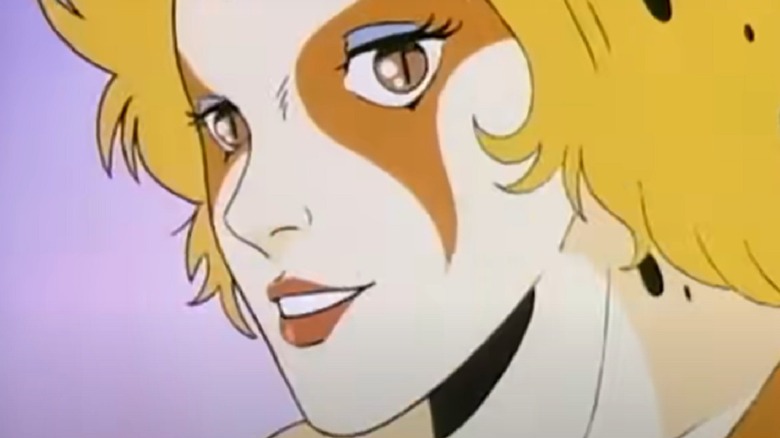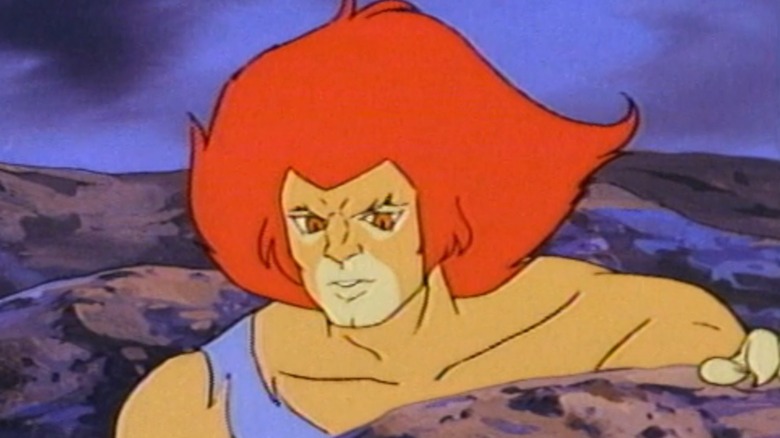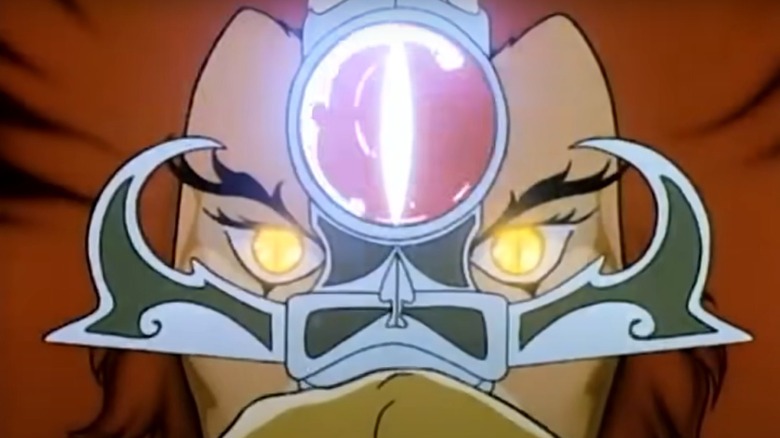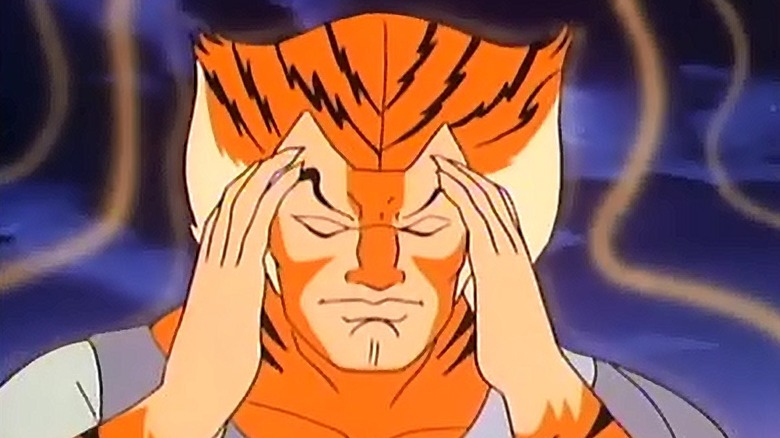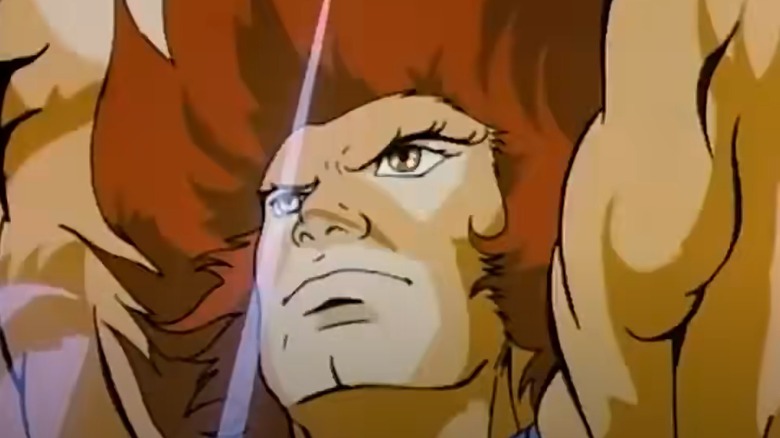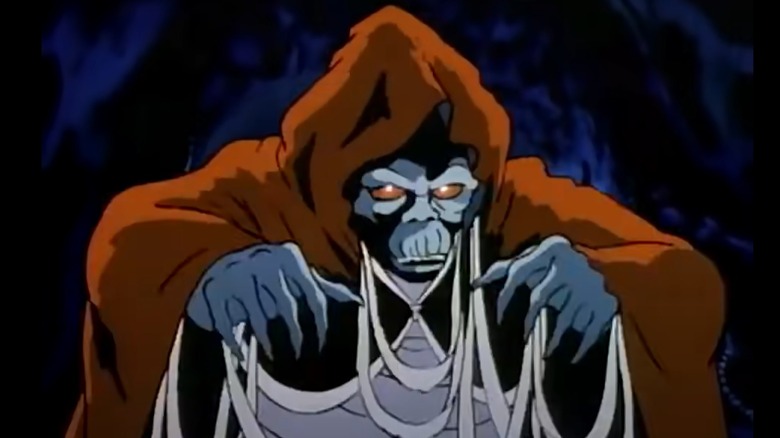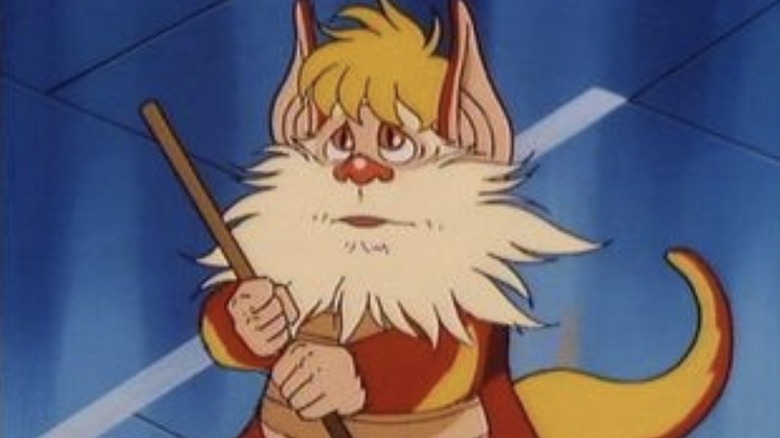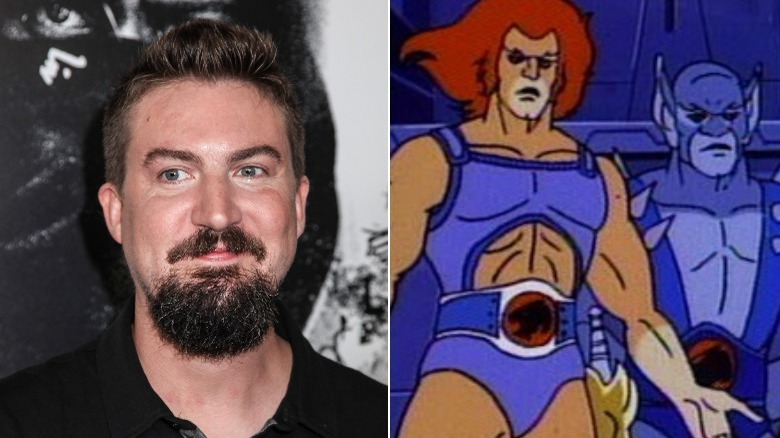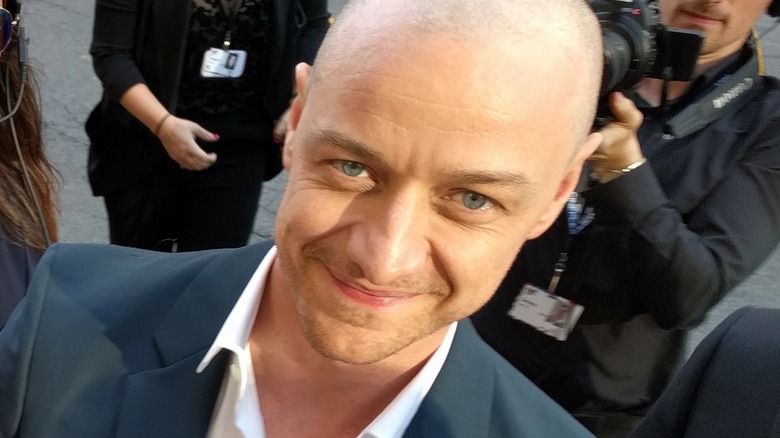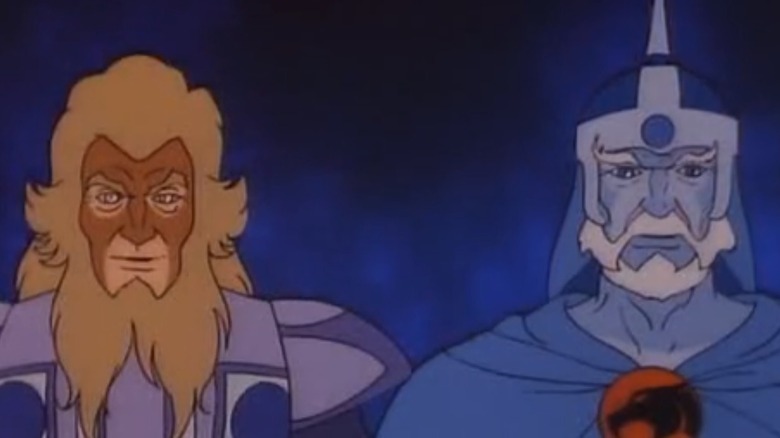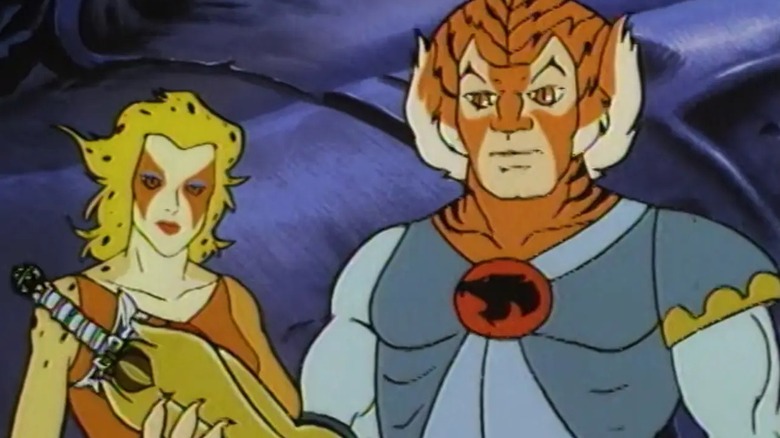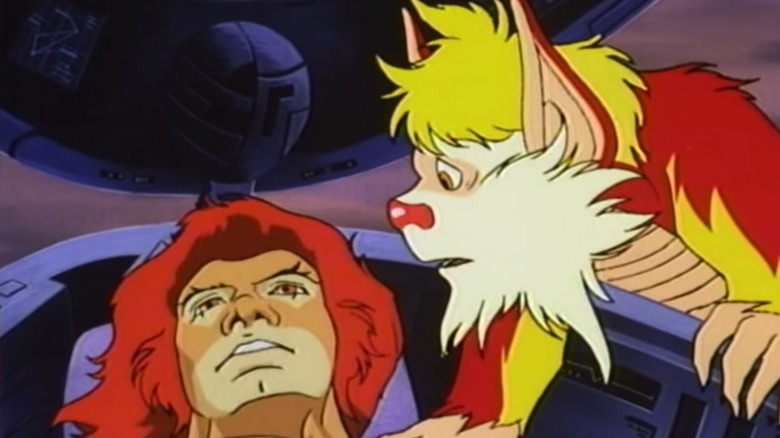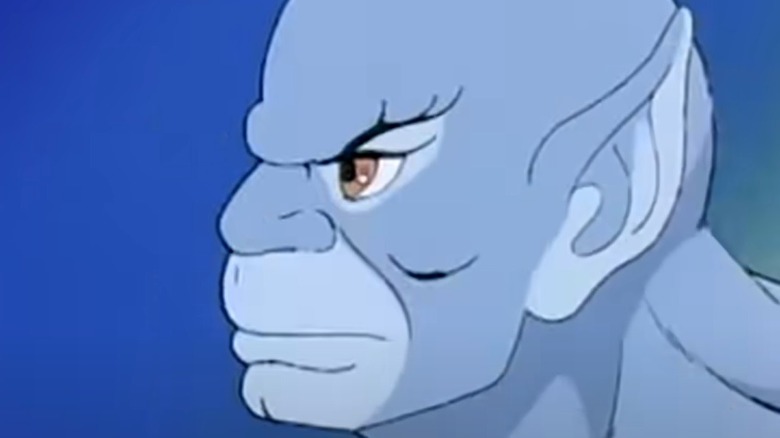The Untold Truth Of ThunderCats
A show about a bunch of feline-like aliens who escaped the doomed planet Thundera and made a new home on Third Earth, "ThunderCats" was one of the most important animated series of the 1980s, alongside the likes of "He-Man and the Masters of the Universe," "Transformers," and "Teenage Mutant Ninja Turtles." The property is still popular today and continues to generate excitement among fans, with some "ThunderCats" actions figures selling for thousands of dollars. The franchise competed nobly in the toy wars of the 1980s, but there was more to "ThunderCats" than meets the Eye of Thundera.
The series cost an astronomical amount of money to produce, a risky investment on Telepictures Corporation's part. There was also the need to keep the controversial lobby groups of the time at bay. In the years since the cartoon ended, eye-opening tales about the production have spilled out, showcasing a different side to events that no fan could have ever imagined. So let's take a walk on the wild side and uncover the untold truth of "ThunderCats."
ThunderCats was created by the Wolf family
In the 1980s, most animated kids' shows served as half-hour advertisements for their respective toy lines. While "ThunderCats" was no different, the franchise's origins are far more earnest. The beloved animated series was dreamed up by the late Ted Wolf in 1981. Wolf was both a creative and an inventor, renowned as the person who conceptualized Singer's portable record player. However, the creation of "ThunderCats" was more of a family affair, as revealed by his daughter.
"We sat around the table creating the characters," Janice Wolf told The Honolulu Advertiser. "It was a morality play, with superheroes... Basically, the characters have survived pretty much as they were intended." After the family workshopped the idea together, Wolf took some sketches of the characters and the overall story concept to Telepictures Corporation. The thumbs-up came from the executives and the ThunderCats roared into action four years later, hitting TV screens in 1985.
ThunderCats cost millions to make
Nowadays, it isn't unusual for television shows to have eye-watering budgets: "The Lord of the Rings: The Rings of Power" is expected to set Amazon back over a billion dollars, according to The Hollywood Reporter. The 1980s was a time of overspending, but these kinds of numbers were still unheard of, especially when it came to animated kids' shows. So how did a series about cat-like aliens manage to secure a multimillion-dollar commitment?
According to a clipping from the St. Joseph News-Press dated September 21, 1985, "ThunderCats" cost $15 million to produce. Then-president of the Telepictures Corporation, Michael Garin, and Arthur H. Loomis, VP of Finance and Administration, confirmed this number was accurate. The reason for this large investment was simple. Telepictures secured a guarantee from the TV stations to air the animated show for three years, and in return, the stations would get a cut of the toy sales. It was a classic case of spending money to make money.
Those explicit ThunderCats outtakes were never meant to be heard
"ThunderCats" was all about good values and doing the right thing. Lion-O and his friends were paragons of virtue, inspiring young children to fight against the kind of behavior that would furrow the brows of their parents and teachers. That's why it was so shocking when some explicit outtakes in which the voice actors let loose (often in character) made their way onto the internet.
At first, many fans of the original show presumed these outtakes were false, recorded by people who were good at impersonating the characters. However, Lion-O voice actor Larry Kenney later confirmed they were genuine in an interview with ThunderCats.org. "Yes, the 'outtakes' on the web are real, and all of us cast members feel badly that they are available for young people to hear," Kenney said, adding that he was heartbroken to receive an email from a young fan asking if Lion-O really said such horrible things. The veteran voice actor blamed one of the show's sound engineers for leaking the R-rated content. "We had no idea those things would ever be heard outside the recording studio."
Lion-O had a different name in the pitch
Lion-O is a name as instantly recognizable as He-Man, She-Ra, or Optimus Prime. Even those who have never watched an episode of "ThunderCats" know that the guy with the orange mane and the cool sword is the group's fearless leader. What few people know is that this iconic character had a different name in the series pitch: He was originally called Lion-L. It's easy to understand why they changed it — the Lionel Richie jokes would have been all too easy to make.
The "ThunderCats" lead wasn't the only character with a different name in the pitch. Cheetara was known as Cheet-A, Jaga was Jagu-R, Panthro was Panth-R, and Tygra was Tige-R. The naming convention for the supporting characters was fairly obvious to spot, but we have to wonder why Lion-O wasn't called Lio-N using that same formula? Regardless, the final names selected were probably for the best and most fans simply can't imagine these classic characters under any other guise.
A psychologist reviewed every episode before it aired
Not every kids' show idea that's slapped against a whiteboard ends up getting made, as there are numerous boxes to tick and hoops to jump through when it comes to children's programming. The 1980s was an era renowned for parent groups lobbying and protesting over kids' shows, and the people behind "ThunderCats" were well aware of this. The show instilled a few basic but important checkpoints in the production process, ensuring that it wouldn't be in the limelight for the wrong reasons like many of its contemporaries.
As revealed by former writer Lee Schneider in a HuffPost column, a psychologist was employed to read every script and determine if the story was appropriate for children or not. Of course, what is considered appropriate for kids differs from person to person. "If you check the statistics during the period the cartoon aired, you'll see that murder rates went down, school attendance went up and SAT scores went through the roof," Schneider joked. "When kids weren't scoring really high on their SATs or busy not committing crimes they were peeing their beds, scared to death with nightmares of Mumm-Ra, the bad guy of 'ThunderCats.'"
The real reason Snarf was created
"ThunderCats" immediately evokes memories of the heroic Lion-O, the skilled Cheetara, the super-smart Tygra, or even the sinister villain Mumm-Ra. One character that most fans would rather forget existed is the annoying Snarf, who didn't do much other than make weird noises and get in the way. The creators of the 2011 "ThunderCats" reboot almost got rid of the shrill-voiced furball, showrunner Michael Jelenic revealed. "Snarf came very close to getting the ax," he told Reuters. "And then he was reimagined as a sort of tough battle cat. Like, a Doberman pinscher version of Snarf — but a cat."
Why was Snarf even introduced in the first place? Peter Lawrence, one of the writers on the original "ThunderCats," revealed the real reason for Snarf's inclusion to ThunderCatsFans.org. "Snarf was invented by [executive producer] Jules Bass," Lawrence said. "Bass invented Snarf because he wanted light relief and, as he said, everyone loves some kind of whacko animal." Despite the general animosity towards Snarf, we cannot deny that he has established himself as part of the "ThunderCats" legacy — for better or worse.
Adam Wingard wrote a ThunderCats screenplay in high school
There have been several "Transformers" and "Teenage Mutant Ninja Turtles" movies over the years, but we've yet to see a big screen, live-action adaptation of "ThunderCats." That's set to change in the near future, as "Godzilla vs. Kong" director Adam Wingard has signed on to helm a feature film based on the famous '80s cartoon. The good news for fans is that Wingard is a major fan of the franchise — he even wrote a "ThunderCats" screenplay when he was a teenager.
"My real obsession with 'ThunderCats' came in high school, the pinnacle of me deciding I wanted to be a filmmaker, and pushing in that direction," he told Deadline. "I didn't pay attention in school, made terrible grades. And the reason? I was writing my 'ThunderCats' screenplay through my entire 10th-grade year." Wingard revealed that he wrote his 272-page script by hand and still has all the notebooks. When he learned that a "ThunderCats" script was doing the rounds in Hollywood, he asked the attached producers if he could rework it. "This is a huge passion thing for me," he added. "Nobody on this planet knows or has thought as much about 'ThunderCats' as I have."
James McAvoy is another big fan of the franchise
Remember that time the internet believed Michael Bay's "6 Underground" was secretly a live-action "ThunderCats" film and the story had to be debunked by Ryan Reynolds? The "Deadpool" star has been linked to the role of Lion-O in Adam Wingard's upcoming feature film, and he's not the first "X-Men" actor to insert himself into the conversation. Speaking to Total Film, James McAvoy (Charles Xavier) revealed that he grew up loving "ThunderCats" and "would like to see a 'ThunderCats' movie."
"Lion-O is a great character for any actor," the Scottish star said. "It's kind of explored a little bit in the cartoon, but you could really go for a 12-year-old in the body of a man. Like, a ripped, muscly, fighting man who is meant to be the king of these people, but he's got a 12-year-old's intellect. It's basically the movie 'Vice Versa,' but with superpowers and the Sword of Omens." McAvoy went on to joke that the role could lead to an Academy Award if played correctly.
How ThunderCats paid tribute to Star Wars
"ThunderCats" arrived on television a few years after George Lucas' original "Star Wars" trilogy came to a close. The galaxy far, far away didn't only inspire the next generation of sci-fi and fantasy properties, it also carried a powerful message of how redemption is possible for even the biggest villains. Darth Vader had become corrupted by his anger, turning to the dark side of the Force, but when it mattered most, he rediscovered his humanity and did what was right. The good versus evil element of "Star Wars" permeated throughout every "ThunderCats" episode, but the animated show also paid tribute to Lucas' space opera in another way.
Chatting to ThunderCatsFans.org, writer and character designer Dennis Woodyard revealed that he included a homage to "Star Wars" in the episode "Shadowmaster," mimicking a famous scene from the films. "One of my favorite parts was the ending where Lion-O's father appears next to Jaga," he said. "That was my nod to 'Star Wars.'" Like the ending of "Return of the Jedi," where the Force ghosts of Anakin Skywalker, Obi-Wan Kenobi, and Yoda appear to Luke Skywalker, this scene was important to Lion-O. It showcased his mentors effectively passing on the leadership of the ThunderCats to him.
Leonard Starr didn't know Ted Wolf was a real person
The making of a television show can be a complicated process. When the creator isn't the showrunner, they have to hand over their babies and hope the team involved in bringing the show to life treats them right. Sometimes, showrunners open up a dialogue with the creators to ensure the original vision's integrity. "ThunderCats" showrunner Leonard Starr didn't even think the creator of the characters, Ted Wolf, was a real person when he first signed on.
When he was asked about Wolf in an interview, he was shocked to learn that he wasn't made up. "Ted Wolf? There really was a Ted Wolf? The first I ever heard of him was when I saw his name on the opening credits of the first show," Starr said. "I thought it might be a manufactured name, maybe for copyright reasons." It's mind-blowing to think that these two men were the architects of a multimillion-dollar franchise, despite one not being aware of the other's existence.
Larry Kenney believes ThunderCats' moral values set it apart
At first glance, "ThunderCats" is your typical sword-and-sorcery show. Below the surface, however, there's a story that digs a little deeper than a simple plot about villains wanting a magical item from the heroes. Yes, the primary goal was to create a demand for "ThunderCats" action figures and make lots of money, but every episode of the show also imparted wisdom and moral values to the children watching.
In an interview with fan site ThunderCats.org, Larry Kenney argued that "ThunderCats" has stood the test of time due to its inherent positive message, which set it apart from many other shows of the era. "'ThunderCats' was conceived at a time when the TV industry was being criticized for bombarding children with violence and negativity," Kenney said. "We attempted to entertain kids, and at the same time show that problems can be solved without violence by people working together."
The voice cast had a blast making the show
As mentioned earlier, Telepictures Corporation secured a three-year commitment for "ThunderCats" from television stations after promising a cut of the toy sales. It received another year after that, rounding off the series with four seasons. This meant that 130 episodes were made between 1985 and 1989. "Once production began, we'd record two episodes a day, two days per week, for a few months, then take a break," Larry Kenney told ThunderCats.org. "We'd receive our scripts in the mail a few days prior to recording, to allow us to rehearse our lines. Each half-hour episode took 3-4 hours to record."
Kenney confirmed that this was the process for about two and a half years while the team worked on "ThunderCats" actively. The way the seasoned voice actor tells it, the whole cast had an absolute blast in that time. "I really don't have a singular favorite moment of production," he said. "We always had a lot of fun."
